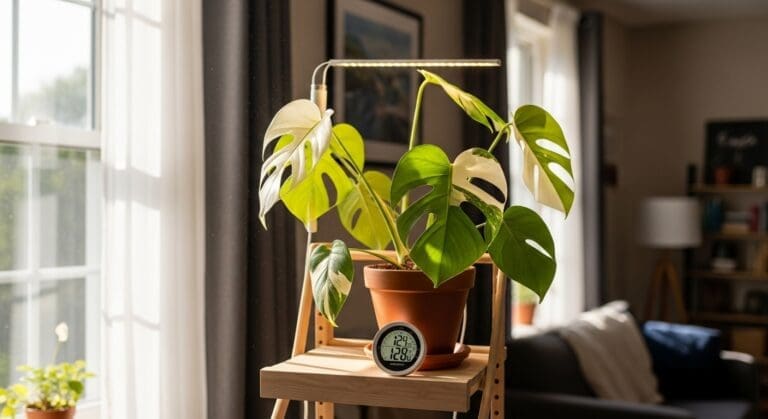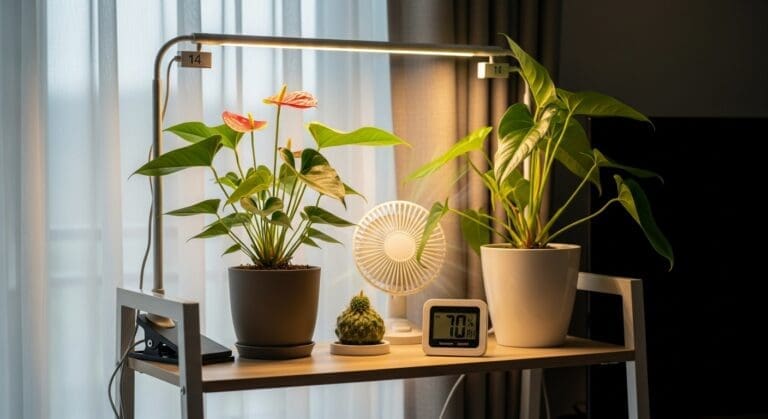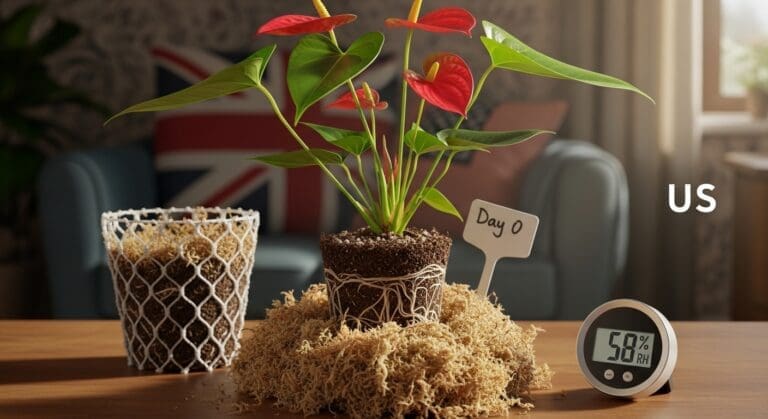If you’ve ever admired the deep green, feathery fronds of a healthy fern and wondered how to keep yours looking that vibrant, the secret often lies in one thing — fertilizing ferns the right way. Many plant owners focus on watering and light, but without proper feeding, even the most pampered fern can lose its luster.
“Whenever I skip a feeding or two, my Boston fern seems to sulk — it’s like it knows!”
This guide will walk you through how, when, and what to feed your ferns for consistent lush growth all year round, whether you keep them in a London flat or a cozy New York apartment.
If you’re just starting with fern care, our complete Indoor Fern Care Guide covers everything from light to watering.
Why Fertilizing Ferns Is Essential
Ferns, unlike many flowering plants, grow continuously through the year in the right conditions. This constant growth means they steadily deplete nutrients from their soil. Without replenishment, the fronds can become pale, growth may slow, and the plant may become more vulnerable to pests and disease.
Key reasons to fertilize ferns regularly:
- Maintain deep green foliage
- Support strong, resilient fronds
- Encourage steady, healthy growth
- Prevent nutrient deficiencies
According to Jane Ellis, horticulturist at the Royal Botanic Gardens, Kew:
“Ferns thrive when given a balanced nutrient supply. A light but regular feeding schedule can make the difference between average and exceptional foliage.”
For more on fern care basics, you can refer to the Royal Horticultural Society’s guide to ferns.
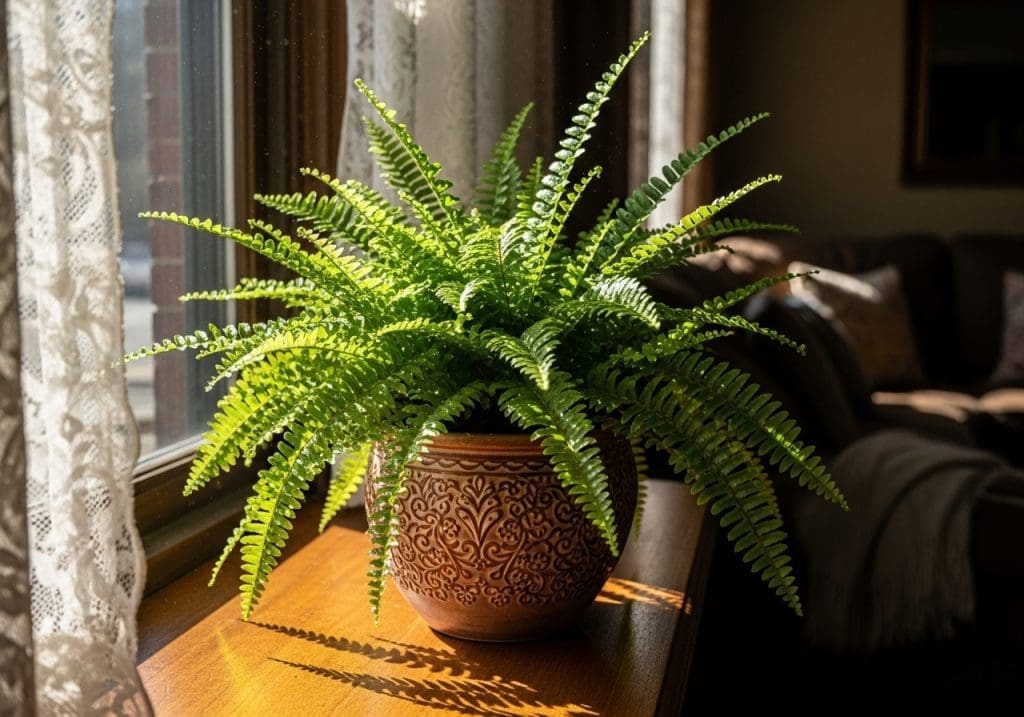
Understanding Fern Nutrient Needs
Unlike some houseplants that can tolerate nutrient neglect, ferns benefit from a balanced fertilizer that provides all the essential macronutrients (nitrogen, phosphorus, potassium) and a few key micronutrients.
- Nitrogen (N) – Encourages lush, green foliage.
- Phosphorus (P) – Supports root development.
- Potassium (K) – Enhances plant resilience and overall vigor.
Tip: Choose a fertilizer labeled as “balanced” (e.g., 10-10-10 or 20-20-20) for general fern health.
Choosing the Right Fertilizer for Ferns
There’s no one-size-fits-all fertilizer, but these are the three main types you can consider:
1. Liquid Fertilizers
- Best for: Quick nutrient uptake and easy control over strength.
- How to use: Dilute to half the recommended strength to avoid burning the delicate fronds. Feed monthly during active growth.
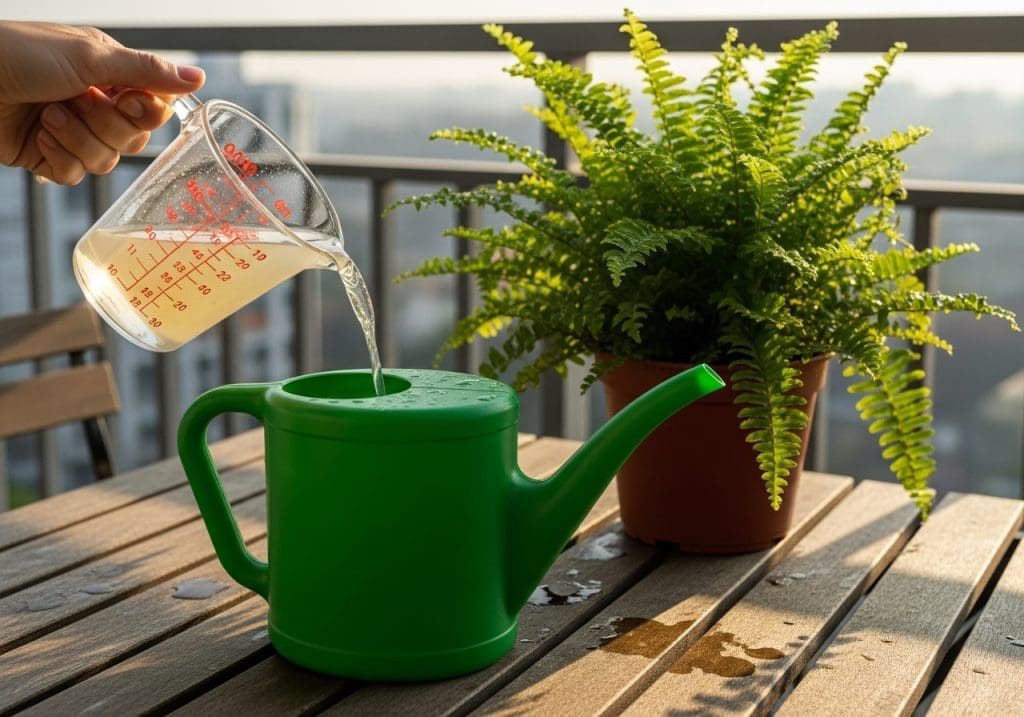
2. Slow-Release Granules
- Best for: Low-maintenance feeding.
- How to use: Sprinkle evenly over the soil surface every 2–3 months, following the instructions on the package.
3. Organic Fertilizers
- Best for: Long-term soil health and gentle feeding.
- Examples include seaweed extract, worm castings, and compost tea.
- Organic options improve soil structure while feeding the plant.
For more on getting the perfect soil texture, see our guide on Best Soil Mix for Indoor Ferns: Drainage & Moisture Balance.
Monthly Feeding Schedule for Ferns
Consistency is the secret. Here’s a simple month-by-month feeding plan you can adapt for indoor ferns:
Spring to Early Autumn (March–September):
- Feed once a month using diluted liquid fertilizer or apply slow-release granules every 2–3 months.
- Increase humidity to support active growth.
Autumn to Winter (October–February):
- Reduce feeding to once every 6–8 weeks.
- Avoid heavy feeding in low light — the plant’s growth naturally slows.
“Winter always tempts me to overfeed, but I’ve learned ferns prefer a little rest during the darker months.”
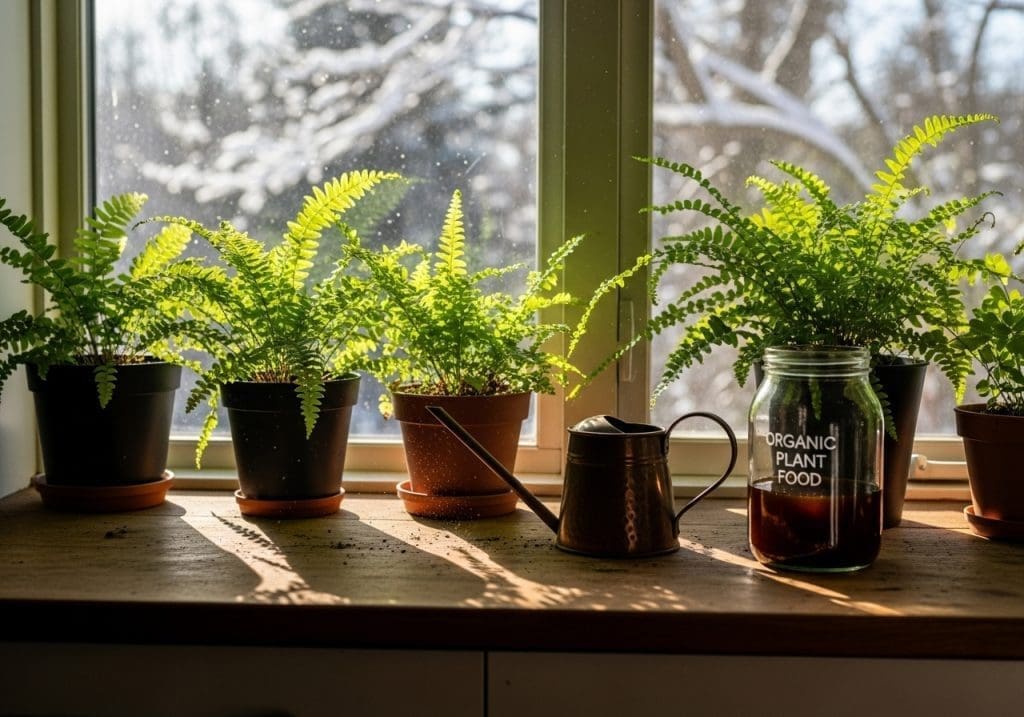
How to Apply Fertilizer Correctly
Even the best fertilizer can harm a fern if used incorrectly. Here’s how to feed safely:
- Water First – Always water the soil lightly before applying fertilizer to prevent root burn.
- Dilute Properly – Err on the side of weaker solutions; ferns prefer light feeding.
- Avoid Frond Contact – Fertilizer can damage leaves if it touches them directly. Apply to soil only.
If you struggle to keep soil consistently moist, our article on Self-Watering Pots for Ferns might be exactly what you need.
Signs Your Fern Needs Feeding
Not sure if your fern is hungry? Look out for these clues:
- Pale or yellowing fronds
- Stunted growth
- Weak, thin stems
- Leaves dropping more frequently
Common Feeding Mistakes to Avoid
- Overfertilizing – Leads to root burn and salt buildup.
- Skipping Winter Adjustments – Feeding too much when growth slows can harm the plant.
- Using High-Nitrogen Fertilizers – These can encourage leaf growth at the expense of root health.

Pairing Fertilizing with Other Care Tips
Fertilizing works best when combined with good overall care:
- Maintain consistent moisture — ferns dislike drying out completely.
- Keep humidity high, especially in heated indoor spaces.
- Provide bright, indirect light for best growth.
Feeding your ferns monthly isn’t just about making them look good — it’s about giving them the steady nutrition they need to thrive for years. And when you see those rich green fronds unfurling, you’ll know your care is paying off.

RarePlantCare Editorial Team produces expert content on rare plants.
Our articles are AI-assisted and human-edited before publication.
We aim to provide practical, evidence-based guides for plant lovers worldwide.
Learn more about our Editorial Policy



